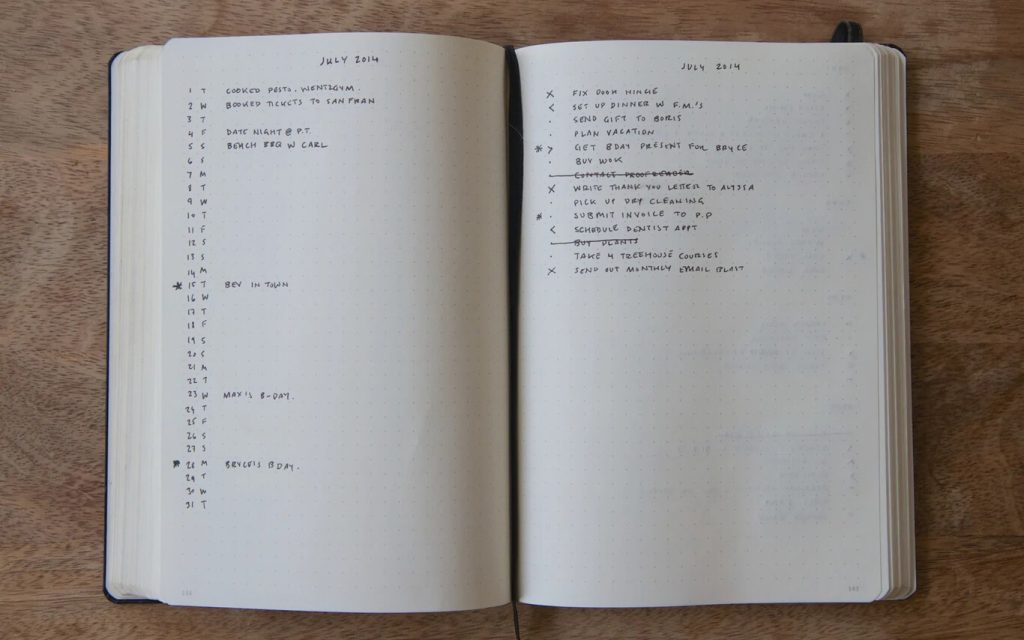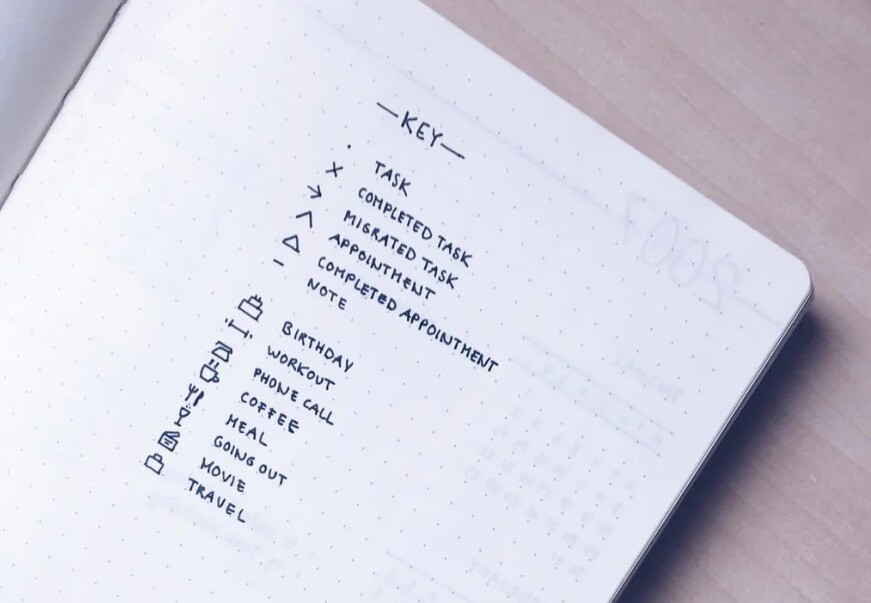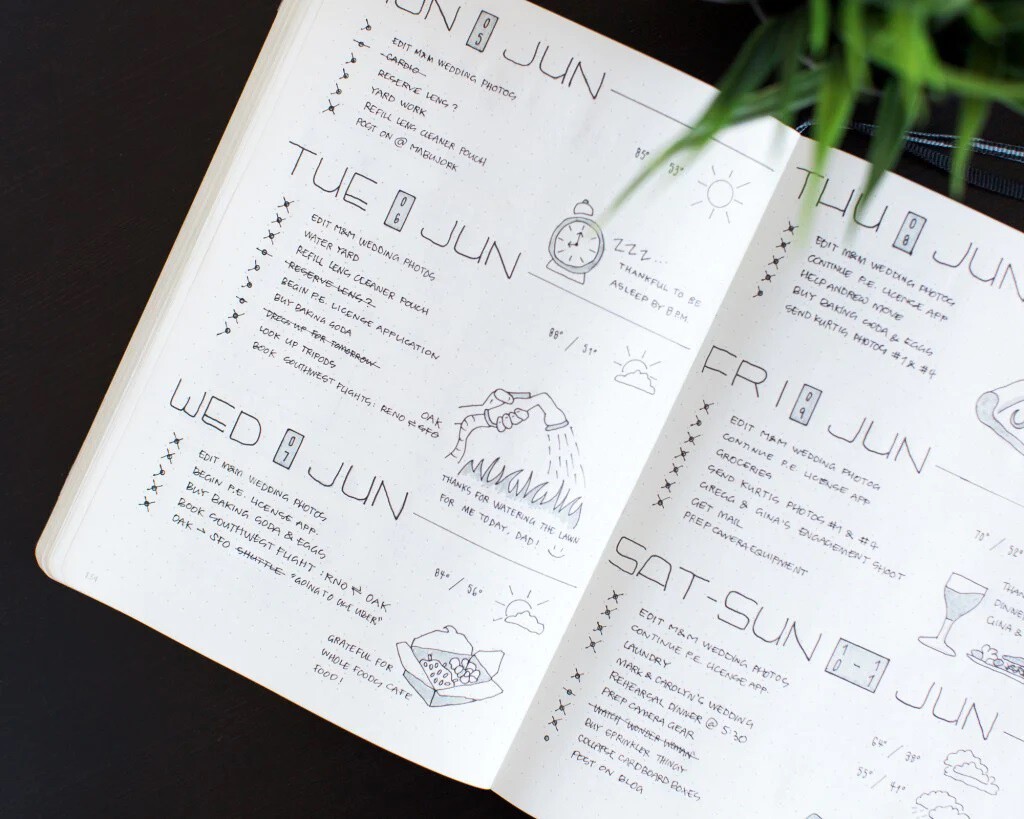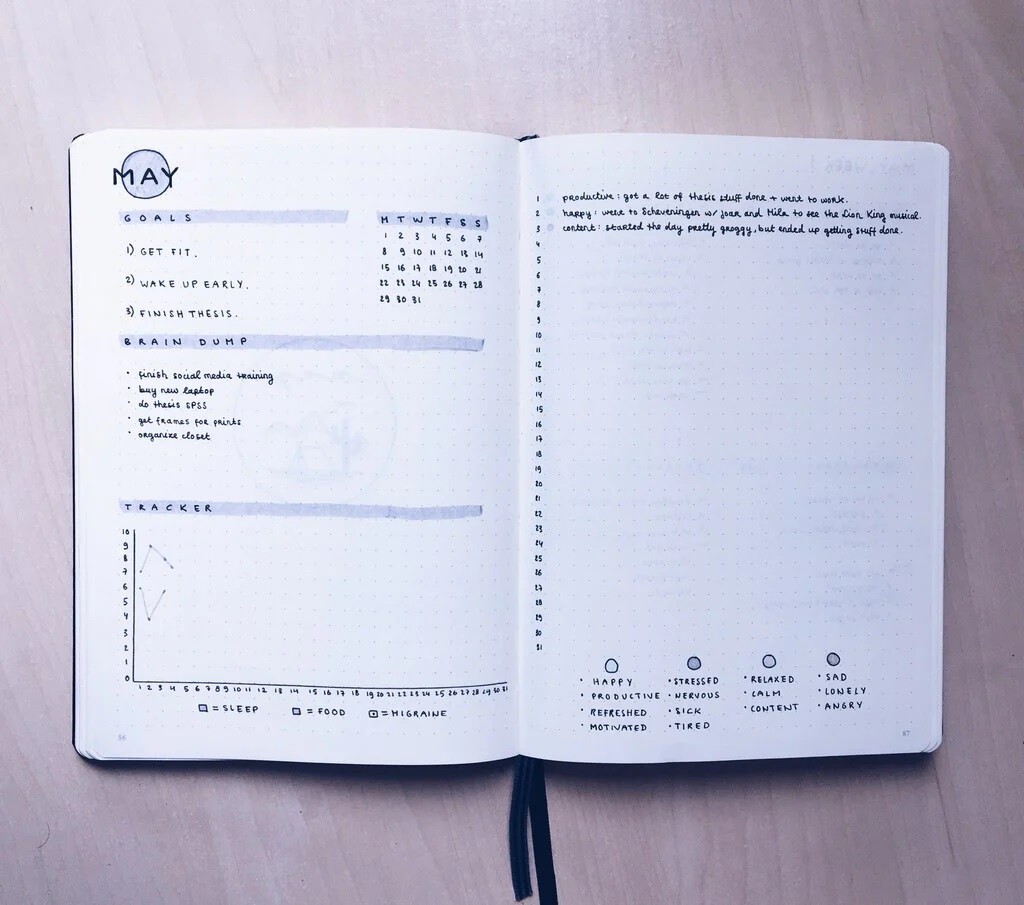Productivity is something that has been obsessing human beings for centuries. Our routines are full of responsibilities that we try to attend to without making our lives chaotic. We could say that human beings are, in a way, condemned to organize themselves to make the most of their time. That’s why we tend to make lists for everything because that’s how our head works: “To-do list at work, shopping list, travel list, gift list”.
There are so many things that don’t leave us alone. So today we explain to you what the Bullet Journal method is, the analog personal organization system that has become a social media sensation in recent years, with more than three million related posts on Instagram and bloggers creating content on how to make the most of this system that they say helps improve productivity, reduce stress and sleep better.
“It frees up mental space and simplifies life.”
The Bullet Journal or “BuJo” was created by designer Ryder Carroll and is a combination of a planner, to-do list, and diary. He describes it as a method to “track the past, organize the present, and plan for the future.” So, what’s so special about this journal? It’s a quick and simple way to multitask without getting overwhelmed. But, above all, it helps you meet your daily, weekly, and monthly goals.
How Bullet Journal works
Most of the to-do lists we tend to make tend to confuse us and mostly remind us of how overwhelmed we are by the fact that we have to complete everything. The Bullet Journal wants to put an end to that. Instead of covering your desk in post-it notes and checking your Google Calendar appointments daily, all of these things are combined into one organized “run” on paper. A notebook that helps you visualize your goals and that you can then embellish with doodles, sketches, color-coded notes, etc.
This method has been so successful that the Leuchtturm1917, the official hardcover notebook that you can find on the official Bullet Journal website, is sold out in many places. But we are going to explain how to create one from scratch and at home. The first thing to do is to get a notebook. It is best to choose good materials that can last for a long time because it is a notebook that we are going to be revising often and carrying with us.

The structure of the Bullet Journal will be separated into these divisions:
- Page 1 and 2 – Table of Contents
- Page 3 – Legend
- Page 4,5 – Semi-Annual (or Annual) Record
- Page 6,7 – Monthly Record
- Page 8 – First Daily Record
Bullet Journal, step by step
1) The first thing to do is to create an index and number each of the pages in the notebook. The index is very important to be able to find the information quickly and without wasting time. In this way, we will be able to go through it without much difficulty and without getting lost.

2) Remember to reserve the first page after the table of contents to write down the future legend of symbols. It is important that you learn well the symbology that you are going to use to distinguish the different types of tasks and the state in which they are. This way we can know if we have completed a task, if we have moved it to another day, etc. This is usually the most common guide:
- – / Task
- Or / Appointment or Event
- – / Note
- X / Task Completed
- > / Task Migrated
- < / Task Scheduled
- * / Priority / Important
- ! / Idea / Inspiration
- ? / Research / Search for it
3) Create your weekly and monthly logs

After the table of contents and the legend, you need to reserve several pages for the next month’s log. To create a semi-annual log, simply divide each page into sections and enter the months. In this log, we will write down the few tasks that we know in advance that must be done in those months.
Then you can create a weekly log: write the name of the month we are in and two columns with all the days of the month and the first letter of each day of the week (L, M, M, J, V, S, and D).
4) Create your daily log

Here comes the part of the notebook that you will use the most. Write the date of the day you are on and list all the tasks you want to do that day, identifying them with the corresponding symbol. Events are represented with an “O”. Tasks are with a dot. When they are completed, the dot becomes an “X”. If they are not completed, they become a >, which means they are moved to a new to-do list. If the scheduled task “call Carlos for coffee” becomes “meet next week with Carlos”, it becomes a <.
From there, more layers of complexity are added such as a note, with a hyphen in front or if you’ve had a thought or idea, with an exclamation. You can even download the Bullet Journal app which allows you to keep your notebook organized on your phone. That is, with pictures of your notebook. The idea is to make it physical. And, above all, don’t forget that planning your life shouldn’t feel like work, it should be fun and functional.
This post may contain affiliate links, which means that I may receive a commission if you make a purchase using these links. As an Amazon Associate, I earn from qualifying purchases.

